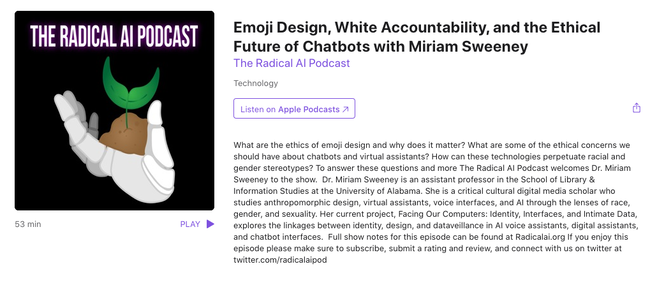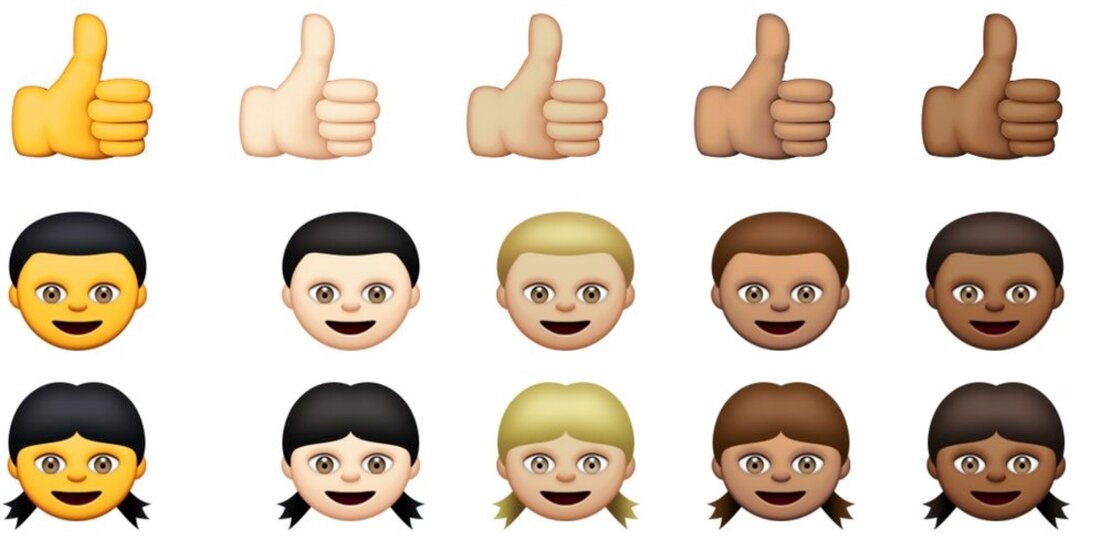I had the absolute pleasure of talking with Jess and Dylan, the hosts of the Radical AI podcast, about the ethics of chatbots, virtual assistants, and emoji design. They were really gracious and fun to talk with, and I can't say enough good things about the quality of their podcast. I highly recommend subscribing to the Radical AI podcast and soaking up all of the wisdom from their conversations with leading scholars in technology and media studies. (A great podcast to use in class and assign for students as well!)
Subscribe or listen to the episode here!
Read the rest of the review here!
Sweeney, M. E. (2020). The emoji revolution: How technology is shaping the future of communication. New Media & Society. https://doi.org/10.1177/1461444820907080
Abstract: Cite as: Sweeney, M.E. & Whaley, K. (2019). Technically white: Emoji skin-tone modifiers as American technoculture. First Monday, 24(7), 0-0, http://dx.doi.org/10.5210/fm.v24i7.10060.
|
Archives
March 2024
Categories
All
|





 RSS Feed
RSS Feed
